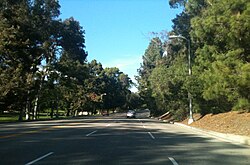Elysian Park | |
|---|---|
 | |
| Coordinates: 34°04′50″N118°14′29″W / 34.08056°N 118.24139°W | |
| Country | United States |
| State | California |
| County | Los Angeles |
| City | Los Angeles |
| Time zone | Pacific |
| Area code | 213/323 |
Elysian Park is a neighborhood in Central Los Angeles, California, United States. The city park, Elysian Park, [1] and Dodger Stadium are within the neighborhood, as are an all-boys Catholic high school and an elementary school.









